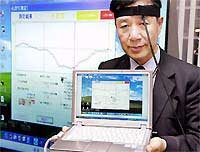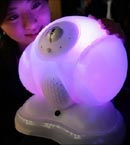Japanese engineers have discovered a way to levitate objects from a sound-reflecting surface using acoustic levitation technology. Although they have not yet achieved stable operation, this advancement could unlock the potential to manipulate objects solely with sound.
In fields such as biomedical engineering, nanotechnology, and pharmaceutical research, the ability to control objects without physical contact is highly beneficial. We can already achieve this with a technology called “optical tweezers,” which uses laser beams to create radiation pressure strong enough to lift and move extremely small particles.
“Acoustic tweezers” have the capability to move small particles using pressure generated by sound waves and have the potential to be a more powerful tool. They can be used to manipulate a wider variety of materials, including larger items that can be measured in millimeters.
However, since their invention in the 1980s, certain limitations have hindered the widespread application of acoustic tweezers. To begin with, a stable “trap” formed from sound waves is required.

Design for creating a sound trap.
A cluster of hemispherical transducers can be used to create this sound trap, but controlling them in real-time is not an easy task, as it requires finding the right sound field to lift an object and move it away from the transducers. Things become even more complicated if there is a reflective surface, which increases the complexity of the sound field.
Two engineers from the University of Tokyo, Japan – Shota Kondo and Kan Okubo – have found a way to build a hemispherical sound cluster capable of lifting a 3mm polystyrene sphere from a reflective surface. In their report, they wrote: “We use a cluster of multi-channel ultrasonic transducers to pick up an object without touching it from a reflective hard surface. The phase and amplitude of each channel are optimized using sound reproduction methods. This creates a sound trap at a specific desired point, allowing for object picking to be performed on a hard surface. To our knowledge, this is the first study on object picking using this method.”
Acoustic tweezers “grabbing” a cotton ball from a reflective surface
Their technique relies on grouping the transducers into blocks, making it easier to control them as a group rather than independently. They then use an inverse filter to reproduce sound based on the sound waveforms. This optimizes the phase and amplitude of each sound transducer channel to create the desired sound field.
This sound field can then be moved, naturally moving around the small object being “trapped” inside. Using this device cluster, the researchers were able to pick up a piece of foam from a mirror surface, although it is not yet very stable – occasionally, the object escapes the sound pressure instead of being trapped.
Nonetheless, this research represents a significant step forward, as picking objects from a reflective surface has never been achieved before. The two Japanese scientists have indeed paved a new path for the development of this field. They wrote: “In future studies, the power of the presented method will be improved to apply non-contact object manipulation in practice.”



















































